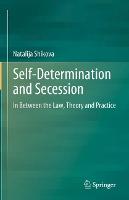Hazardous Organic Pollutants in Colored WastewatersAuthor :
Paperback
Published : Tuesday 5 May 2009
Description
The manufacturing and the application of organic dyes involve the production and the handling of many organic compounds hazardous to human health. Many of these substances are considered toxic, even carcinogenic. Over the past couple of decades, manufacturers and users of dyes have faced increasingly stringent legal regulations promulgated to safeguard human health and the environment. So, there is a clear need to treat dye wastewater prior to discharge into the primary effluent. The limitation of traditional wastewater treatment technologies (biological and physical), such as low rate, disability to degrade many of recalcitrant organic dyes and the production of secondary waste which demands further treatment, can be overcome by the utilisation of advanced oxidation processes (AOPs). These wastewater treatment methods are considered as low- or even non-waste generation technologies. AOPs are based on the production of very reactive species, such as hydroxyl radicals, able to decolourise and to reduce recalcitrant coloured wastewater loads due to the high oxidation power and the lack of selectivity of OH radicals towards a broad range of organic pollutants present in wastewater. Generally, AOPs can be broadly classified concerning the way of OH radicals generation into chemical, photochemical, photocatalytic, mechanical and electrical technologies. This research deals with the application of chemical and photochemical AOPs for the minimisation of recalcitrant coloured pollutants present in wastewaters. The comparative study of several processes, Fe0/H2O2, UV/Fe0/H2O2, UV/O3 and UV/O3/H2O2, was performed through an experimental research of decolourisation and mineralisation of a reactive azo dye C.I. Reactive Blue 137, as a model wastewater pollutant. Applied processes were optimised according to their process parameters, Fe0 dosages, initial H2O2 dosages and initial pH values of treated solutions. The influence of initial organic dye concentration, as well as the addition of solid particles, synthetic zeolites, on the process effectiveness was also investigated. Studied AOPs were evaluated on the basis of their eco-effectiveness, by the means of colour (A610), aromaticity (UV280), TOC and AOX value decrease, and their cost-effectiveness as well.
You may also like ...

by
Paperback
05 May 2009
Pollution and threats to the environment
€62.00
Extended stock – Dispatch 5-7 days

by
Hardback
01 Aug 2024
Regional / International studies
€152.10

by
Hardback
30 Aug 2023
Neurology and clinical neurophysiology
€140.39
Extended stock – Dispatch 5-7 days

by
Hardback
28 Jul 2023
Human rights, civil rights
€163.79
Extended stock – Dispatch 5-7 days
Reviews